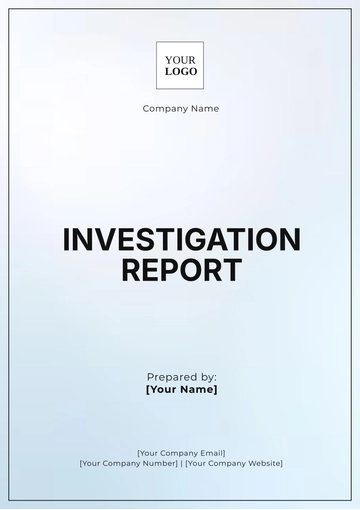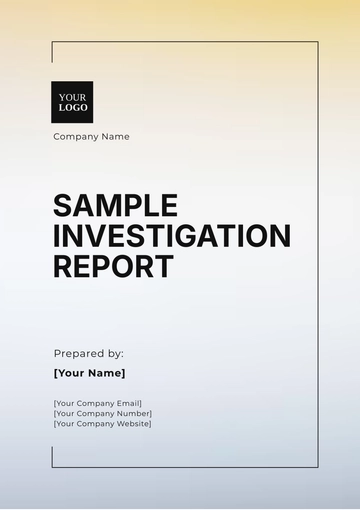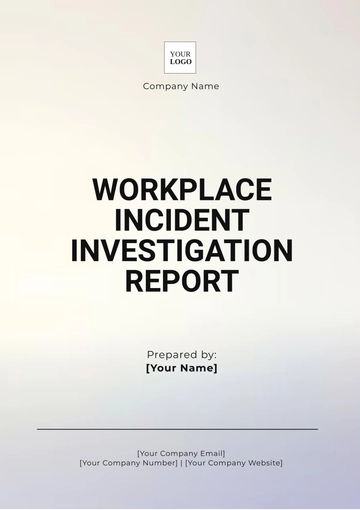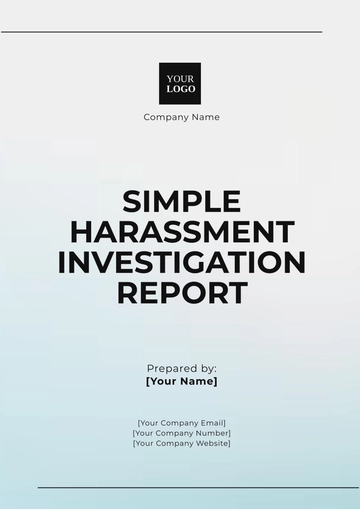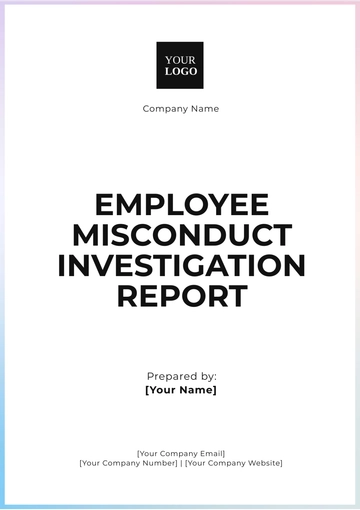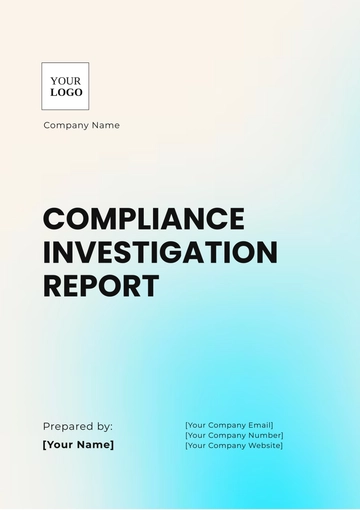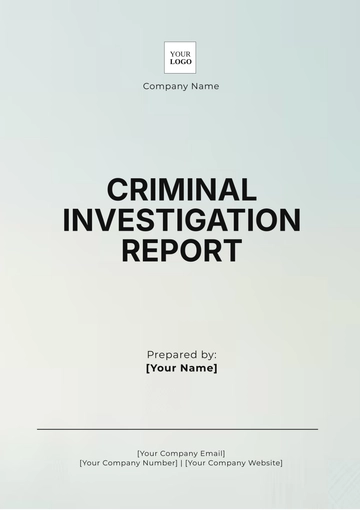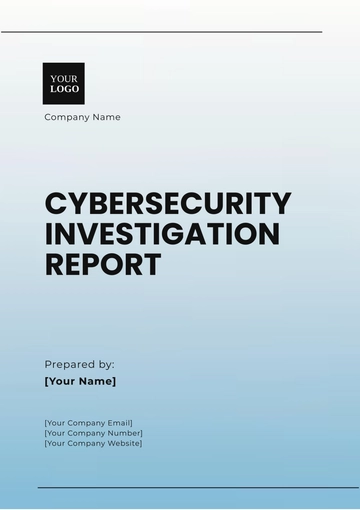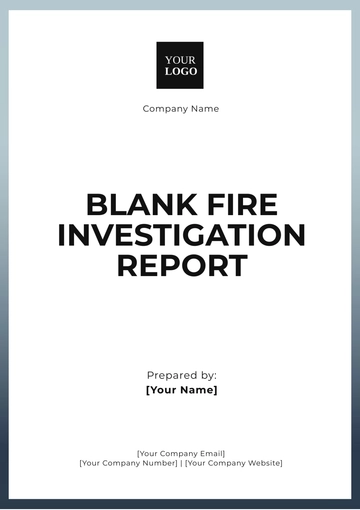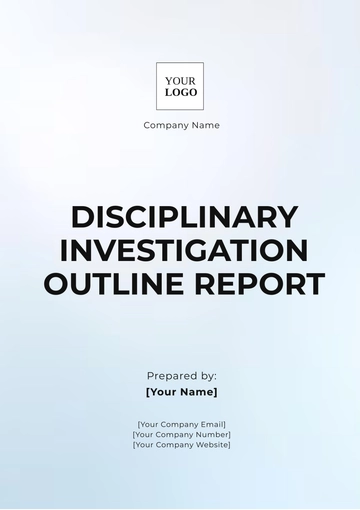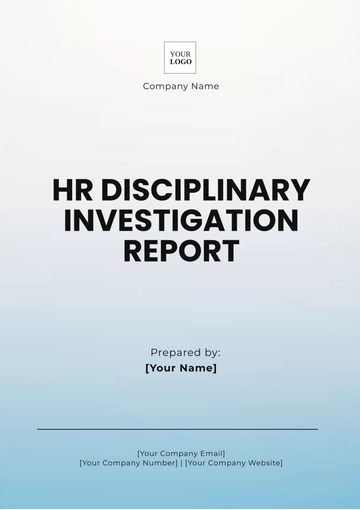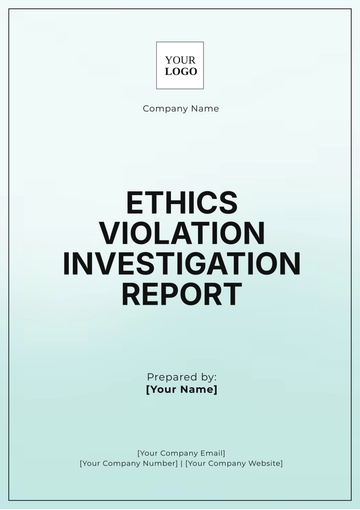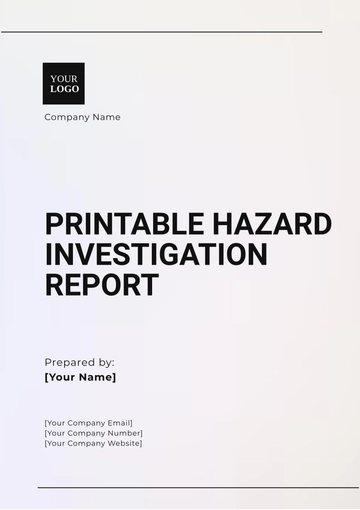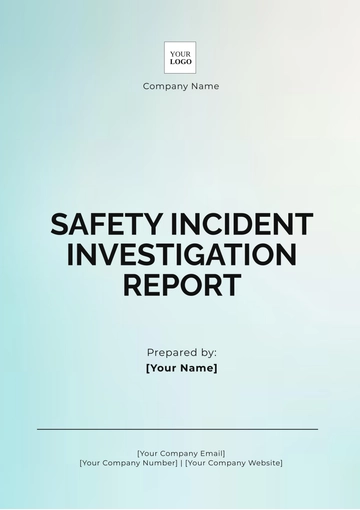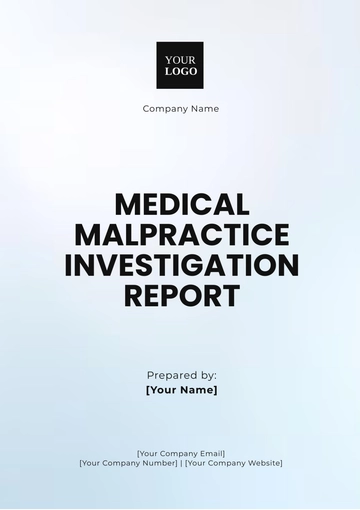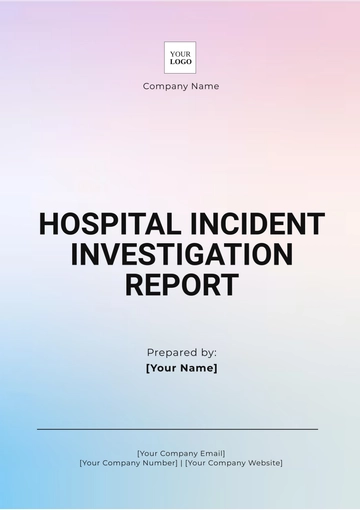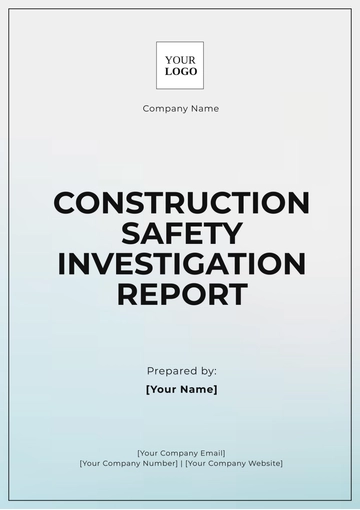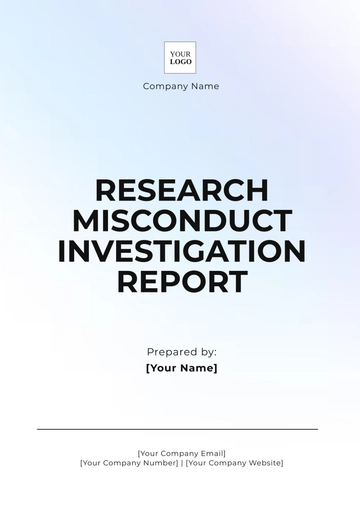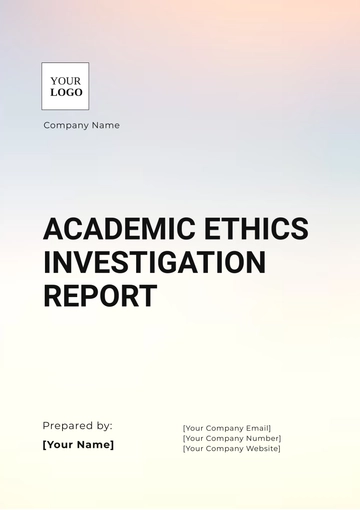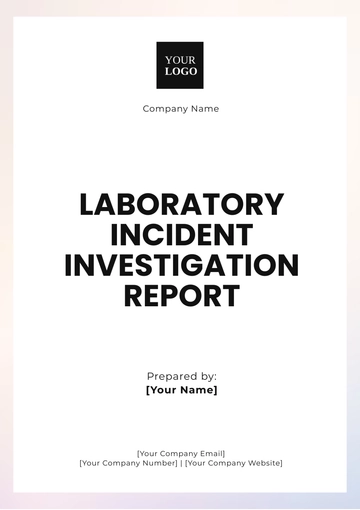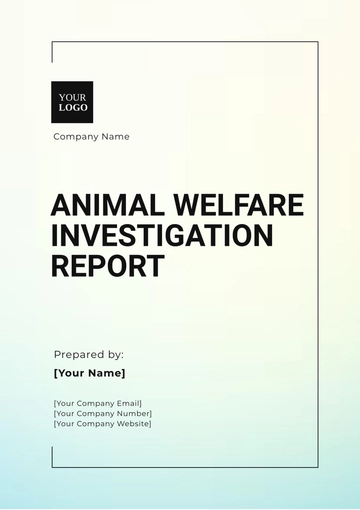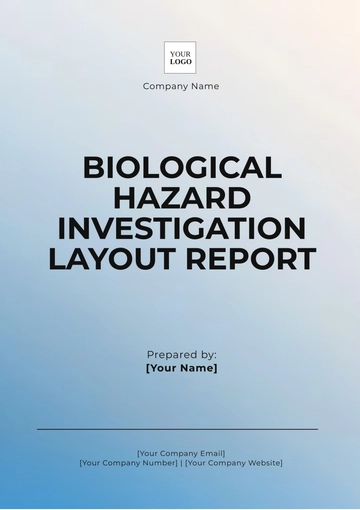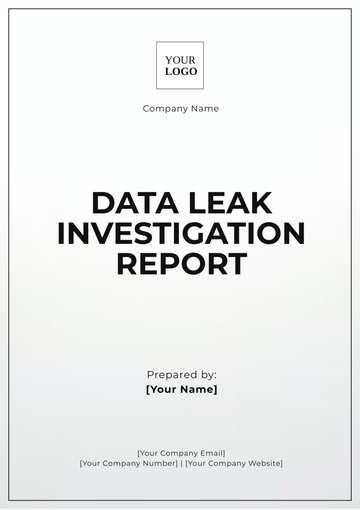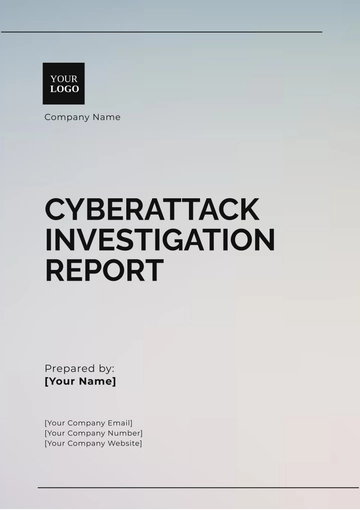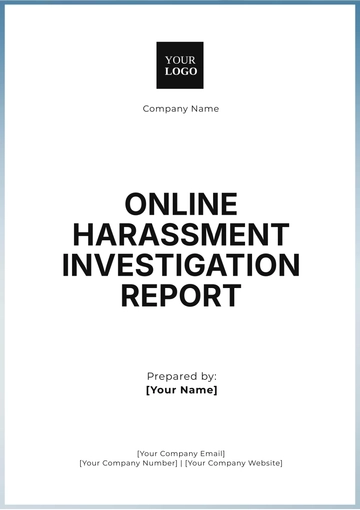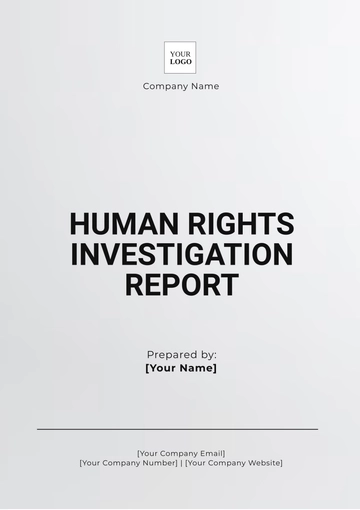Free Medical Malpractice Investigation Report
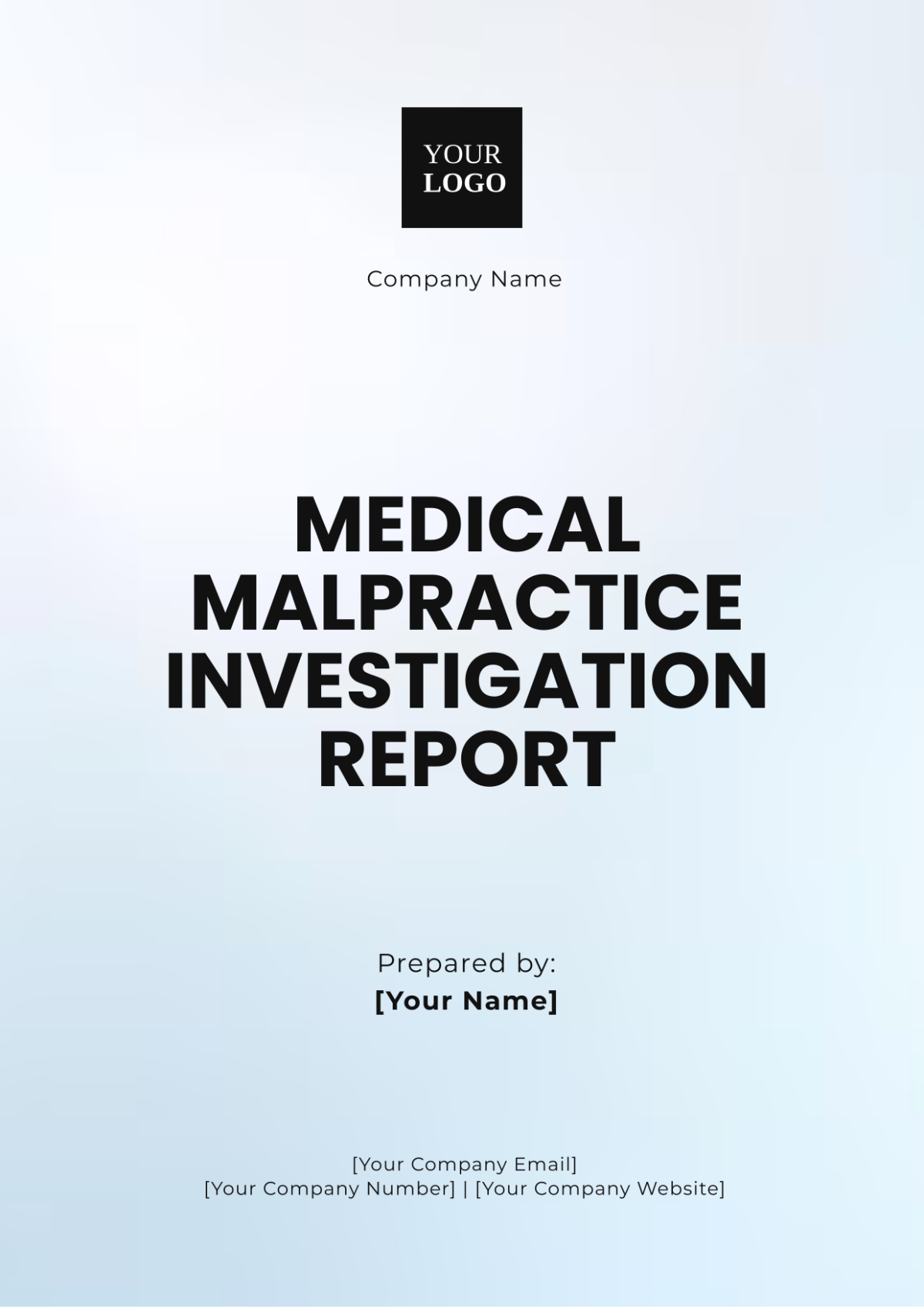
Date of Report: September 27, 2053
Prepared by: [Your Name]
I. Executive Summary
This report provides an in-depth investigation into a medical malpractice case involving a healthcare professional. The investigation covers details from initial complaints to conclusions, focusing on verifying the validity of the malpractice claims made by the patient. The goal of this report is to determine whether the actions taken during the medical procedure met the standard of care expected in the medical community.
II. Case Background
2.1 Incident Overview
On July 12, 2053, Michael Brown, a 45-year-old male, visited Dr. Emily Johnson for a routine check-up. During the consultation, Dr. Johnson recommended a minor surgical procedure to remove a benign growth. The procedure was carried out on July 20, 2053, but resulted in complications, leading to an extended hospital stay and additional treatments.
2.2 Patient History
Michael Brown had a previous history of hypertension and diabetes. He was on medication for both conditions at the time of the procedure. There were no known allergies or previous surgical complications. His prior medical records indicate consistent follow-ups and compliance with prescribed treatments.
III. Investigation Details
3.1 Methodology
The investigation followed a standardized procedure to ensure comprehensive and unbiased findings. It involved:
Collection of medical records
Interviews with medical personnel
Review of standard care protocols
Expert consultations
3.2 Findings
(a) Medical Records Review
The patient’s medical records were thoroughly reviewed. The key findings are summarized as follows:
Document | Details |
|---|---|
Consultation Notes | A recommendation for the procedure was noted; no immediate concerns were recorded. |
Pre-Surgical Assessment | Standard assessments were carried out; the patient was cleared for surgery. |
Surgical Report | Surgery was noted as successful; however, post-surgery complications were observed. |
Post-Procedure Notes | Infection and delayed healing recorded; additional treatments provided. |
(b) Interviews with Medical Personnel
Interviews were conducted with the healthcare provider, the nursing staff present during the surgery, and the hospital’s chief medical officer (CMO). The following points were noted from the interviews:
Healthcare Provider: Followed standard procedures but acknowledged the possibility of rare complications.
Nursing Staff: Confirmed that all pre- and post-operative protocols were followed.
Chief Medical Officer: Provided insights into the hospital’s standard practices and affirmed that protocols were aligned with industry standards.
IV. Expert Analysis
4.1 Standard of Care
Experts in surgical procedures and post-operative care were consulted to evaluate whether the care provided met the standard protocols. Their analysis concluded that the surgical steps taken were in line with accepted medical practices. However, the post-operative care could have been more aggressive in addressing complications early.
4.2 Causality Assessment
To establish a direct link between the surgeon’s actions and the complications suffered by the patient, a causality assessment was performed. The experts identified potential contributing factors, including:
The patient’s underlying health conditions
Risk of infection from the surgical site
Delayed response to initial signs of infection
While it was challenging to pinpoint a single cause, the combined effect of these factors likely led to the adverse outcome.
V. Conclusion and Recommendations
5.1 Conclusion
The investigation concludes that while the conduct during the surgical procedure adhered to standard medical practices, the post-operative care could have been more robust in mitigating the patient's complications. There is evidence suggesting that both medical and non-medical factors influenced the outcome.
5.2 Recommendations
Based on the findings, the following recommendations are made:
Implementation of more rigorous post-operative monitoring protocols.
Additional training for medical staff on early identification of complications.
Regular audits of patient care processes to ensure adherence to best practices.
Development of patient education programs to highlight the importance of reporting post-operative symptoms early.
- 100% Customizable, free editor
- Access 1 Million+ Templates, photo’s & graphics
- Download or share as a template
- Click and replace photos, graphics, text, backgrounds
- Resize, crop, AI write & more
- Access advanced editor
Ensure thorough documentation of medical malpractice cases with the Medical Malpractice Investigation Report Template from Template.net. This editable and customizable template provides a structured format for detailing incidents, evidence, and expert analyses. Its user-friendly design allows for easy modifications to meet specific requirements, promoting clarity and professionalism. Create comprehensive reports that support informed decision-making and enhance accountability in medical practices with this essential investigative tool.
You may also like
- Sales Report
- Daily Report
- Project Report
- Business Report
- Weekly Report
- Incident Report
- Annual Report
- Report Layout
- Report Design
- Progress Report
- Marketing Report
- Company Report
- Monthly Report
- Audit Report
- Status Report
- School Report
- Reports Hr
- Management Report
- Project Status Report
- Handover Report
- Health And Safety Report
- Restaurant Report
- Construction Report
- Research Report
- Evaluation Report
- Investigation Report
- Employee Report
- Advertising Report
- Weekly Status Report
- Project Management Report
- Finance Report
- Service Report
- Technical Report
- Meeting Report
- Quarterly Report
- Inspection Report
- Medical Report
- Test Report
- Summary Report
- Inventory Report
- Valuation Report
- Operations Report
- Payroll Report
- Training Report
- Job Report
- Case Report
- Performance Report
- Board Report
- Internal Audit Report
- Student Report
- Monthly Management Report
- Small Business Report
- Accident Report
- Call Center Report
- Activity Report
- IT and Software Report
- Internship Report
- Visit Report
- Product Report
- Book Report
- Property Report
- Recruitment Report
- University Report
- Event Report
- SEO Report
- Conference Report
- Narrative Report
- Nursing Home Report
- Preschool Report
- Call Report
- Customer Report
- Employee Incident Report
- Accomplishment Report
- Social Media Report
- Work From Home Report
- Security Report
- Damage Report
- Quality Report
- Internal Report
- Nurse Report
- Real Estate Report
- Hotel Report
- Equipment Report
- Credit Report
- Field Report
- Non Profit Report
- Maintenance Report
- News Report
- Survey Report
- Executive Report
- Law Firm Report
- Advertising Agency Report
- Interior Design Report
- Travel Agency Report
- Stock Report
- Salon Report
- Bug Report
- Workplace Report
- Action Report
- Investor Report
- Cleaning Services Report
- Consulting Report
- Freelancer Report
- Site Visit Report
- Trip Report
- Classroom Observation Report
- Vehicle Report
- Final Report
- Software Report
